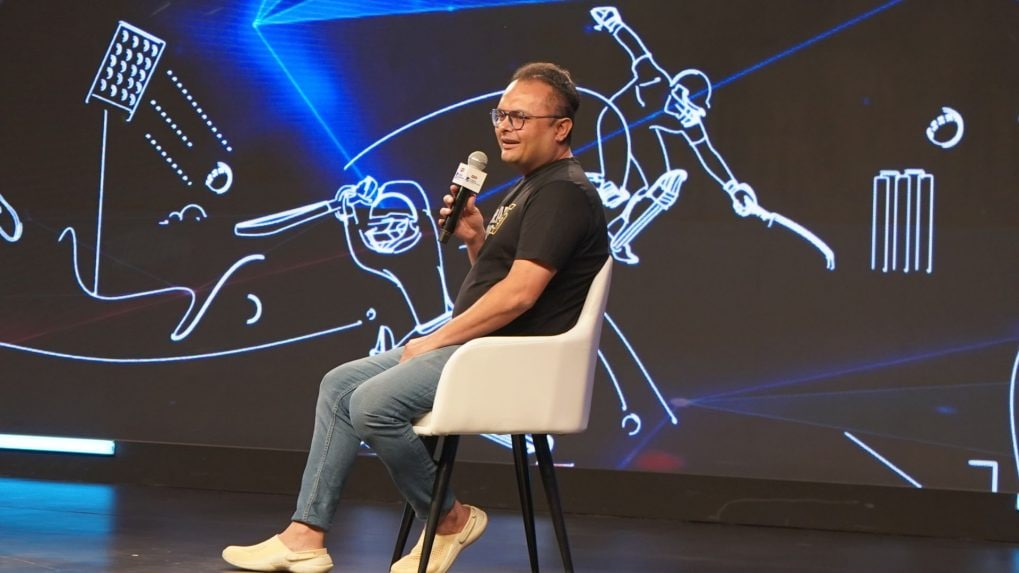Dream Game Studios eyes global markets for mobile cricket games
Recounting a meeting with Prime Minister Narendra Modi at WAVES 2025, CEO Rohit Gupta said the PM's curiosity and support for gaming were a motivation for the company to take their Dream Cricket global
ADVERTISEMENT
Dream Game Studios' founder and CEO, Rohit Gupta, has envisaged taking mobile cricket games globally. Speaking at Storyboard18’s Digital Entertainment Summit (DES) 2025, Gupta said, "Cricket is like a religion in India, but if you look at it from a fan's perspective, a big gap exists in the market. Cricket fans are not getting the experience they deserve compared to football, baseball, or basketball fans when it comes to entertainment". Therefore, a global recognition for the mobile cricket game is required.
Further, Gupta shared his two key priorities: Solving the problems of the gaming industry and putting India on the global map in the booming sector.
Dream Game Studios is part of Dream Sports' portfolio brands that also includes Dream11. The studio developed Dream Cricket, a AAA mobile cricket game.
Recounting a meeting with Prime Minister Narendra Modi at the WAVES Summit 2025, Gupta said the PM's curiosity and support for gaming were a motivation for the company to take their Dream Cricket global. "We have a mandate from the PM to go global. PM Modi told us since cricket is going to be in the Olympics, we should expand the reach of the mobile game worldwide," Gupta said.
Gaming now drives India’s entertainment economy: MIB Secretary Sanjay Jaju at Storyboard18 DES 2025
Further, he said the government has often encouraged the mobile gaming industry and is reckoning on the sector.
"The sports animation business is a high cost venture, but if the government had not supported startups like ours, it wouldn't have been possible".
Gupta underscored that the initiatives taken to upskill the youth in the gaming sector are crucial for both the central and state governments.
Although Gupta is a computer science graduate, he learned about gaming in the US. During the DES Summit, he said, "When I wanted to build a game, I didn't have any pointers. I couldn't find a place to educate myself on gaming, so I had to go to the US, learn it, come back to India, and then start a gaming company".
However, over the past 15 years, there has been a significant improvement in the gaming industry, including the entry of the generative Artificial Intelligence. GenAI will revolutionize the gaming industry by reducing the development time, creating high-quality AAA games, and simplifying the complexities.
He stressed that a lot of work is still required to put India on the global map so that more gaming owners, studios, and stakeholders continue to pin their hopes on the sector and achieve success.
"The gaming industry is gradually picking up in the country. While there's no dearth of skill development, the lack of exposure is the real issue that needs to be resolved," Gupta added.
Currently, Dream Studio has millions of users. Gupta calls the figure a 'tip of the iceberg' as India has 400 million cricket viewers. While there's a huge opportunity for growth, a lot of work needs to be done from a product perspective, he said.
Gaming needs its ‘RRR' moment! Experts on gaming as India's next soft power
"Once we achieve the product market in India, only then we can go global," Gupta stated.
He said India's gaming market is the opposite of its global counterparts-more user-centric and less focused on monetization. Though someday there will be a convergence between the two markets, Gupta said the company will ramp up efforts to achieve a strong product-market fit domestically.
For Dream Cricket, the average age of the user is 29. The gaming platform ranked second after Esports FIFA on the top-grossing charts on iOS.
"We ranked 2nd with 50% of the products, so if we had built it entirely, maybe, we would have been on top," he asserted.
Sports gaming is one of the most complex software to create, but the huge market size boosts aspirations. Besides, the sports games genre also has sustainable growth, according to Gupta.
Citing a comparison between Mario and FIFA, he said former's IP has almost disappeared, while the latter's remained formidable even after 35 years after its launch.
India is the second-largest gaming market in the world, with 23 million users added in fiscal year 2024 alone. The sector's compounded annual growth stands at 14.9%. Currently, the centre employs about 1 lakh people, which could go up to anywhere between 200,000 to 250,000 by 2029, and it has already seen $2.8 credit in funding over the last five years.


